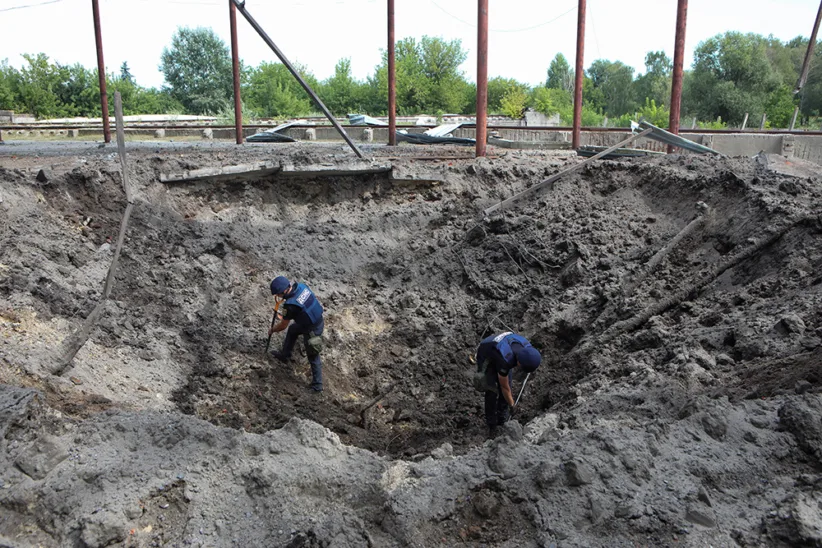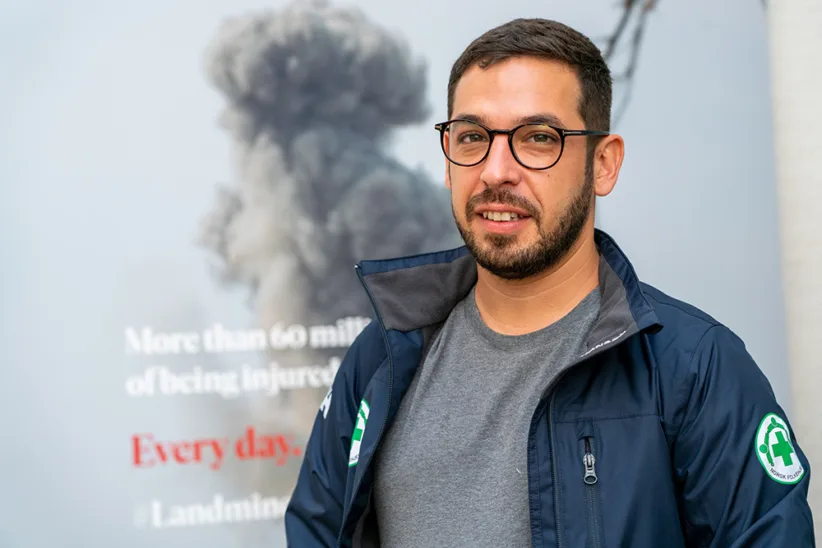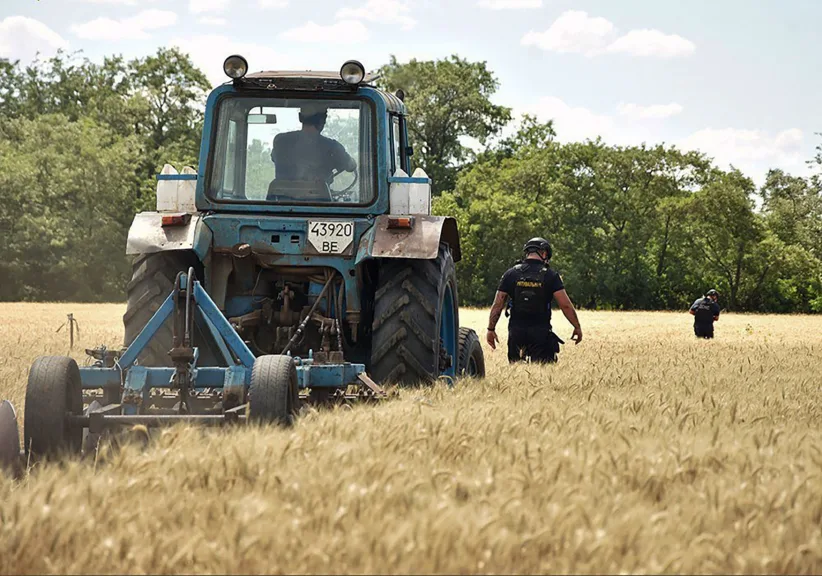Ready to clear mines in Ukraine: On a scale that no one has seen since World War II
The commemoration of Ukrainian Liberation Day on August 24 was also the commemoration of six months of war. During these months, Norwegian People's Aid has gone from having no activity in the country, to get our perhaps largest mine clearance programme to date up and running.

Before the Russian invasion on 24th of February, Ukraine was a blank canvas for Norwegian People's Aid. There had been contact with the authorities during the Donbas War, but the conclusion at the time was that there were enough organizations that were engaged in mine clearance in the country.
That the government had enough personnel to handle the demining work on their own, was also the feedback in the first weeks after the invasion in February. What they needed, however, was materiel, as large parts of the equipment of the mine clearers of the State Emergency Service of Ukraine (SESU) had been lost in the offensive against Mariupol.
"Our first assignment in Ukraine was therefore to transport protective equipment, metal detectors, vehicles, first aid kits and other equipment to SESU's demining agents. We have equipped 10 of SESU's demining teams, a total of 50 employees in the Kyiv and Zaporizhzhia areas", says Alberto Serra, head of the Norwegian People's Aid country programme in Ukraine.

Mine awareness saves lives
However, it didn't take many weeks before it became clear that the amount of mines and explosives Ukraine is facing is unprecedented in recent times. The Ukrainian government gave counter-notification to the entire mine sector that they needed all the assistance they could get in clearing mines and explosives. Within two months, Norwegian People's Aid established an office in Kyiv with a small number of employees.
"The aim is to be up and running with demining operations before the end of the year. We have also partnered with the demining organization Ukrainian Deminers Association (UDA) to start a programme for preparedness and protection (CPP), and provide mine awareness training”, Serra explains.
The activities will take place in Kharkiv in the east and potentially also in the Sumi region in the northeast. The advantage of linking up with local partners is that they already have a broad network and can take greater risks – both important prerequisites when operating in these areas. There is an urgent need in the population for better protection against the enormous amount of mines and explosive remnants that are strewn on the ground.
"Especially in the Kharkiv area there are frequent bomb attacks. We are talking about Ukraine's second largest city, a bombed to death city of millions that still houses thousands of people who do not want or cannot leave their homes. Teaching them some precautions to take during a bomb attack, and how to avoid ending up in a mine accident, will definitely help save lives", says Serra.
Huge amounts of mines
The extent of mines and explosives has so far been impossible to quantify. Ukrainian authorities initially estimated that an area of 300,000 km2 was contaminated, a figure that, according to Serra, would be impossible, as it would correspond to half of the country's land area.
"Now the figures have been adjusted down to 160,000 km2, four times Switzerland – which is probably not entirely realistic either. However, when warfare has been so indiscriminate on the Russian side, it is conceivable that an area of this magnitude will have to be surveyed. In any case, it is beyond any doubt that the amount of explosives we are facing in Ukraine is on a scale that no one has seen since World War II", says Serra.
During September and October, Norwegian People's Aid will hire and train deminers who will work with Non-Technical Survey and demining. The investigations involve holding talks with local authorities, farmers and other residents to map out where the explosives are located. Only when this is done can the demining itself begin.

Good overview of weapon types
It is not only Norwegian People's Aid that will clear mines in Ukraine. Several of the organizations were already present in eastern Ukraine before February 24, and have re-located in the Kyiv area. The organizations meet regularly and cooperate well. Serra estimates that it will take many decades to remove all the mines and explosives in the country. In other words, there is more than enough work for everyone.
The organizations have done a thorough mapping of the types of weapons that have been used in the war, so the deminers know what they will be faced with. True to tradition, when it comes to Russian warfare, the entire arsenal is used, from various variants of anti-personnel mines and anti-tank mines to rockets and missiles. Both in Kharkiv and in the Sumi region, the use of cluster munitions has been confirmed.
"Many people may have heard talk about PFM1, the green little butterfly mine that is launched by rockets. It was frequently used in Afghanistan in the 80s, and is very dangerous as it has a self-triggering mechanism that often does not activate. The butterfly mine has many life and limbs on its conscience, especially among children who understandably become curious about these objects", says Serra.
Lives with the risk
Since February 24, 90 mine and explosive accidents have been recorded and verified in Ukraine. In reality, the figure is probably considerably higher. Large agricultural areas have been contaminated, and many of the accidents occur precisely in the field.
“Last week, a 65-year-old man and a 16-year-old boy were hit by a mine in a field in the Kyiv region. The boy suffered life-threatening injuries but survived. The man didn't make it. We expect the number of accidents to increase further this winter as acute shortages of fuel will force people into the forest to collect firewood", says Serra.
Since Alberto Serra arrived in Kyiv at the beginning of May, the war has mainly moved to southern and eastern parts of the country. He says that the capital's residents have gone from spending several hours in the bomb shelter every day, to living an almost normal life. There is life in the streets and shops, cafes and restaurants are open. On the roads, the traffic jams are back.
"There has only been one attack in Kyiv since I arrived. A rocket hit an apartment building, destroying three floors and killing several civilians. So the situation is by no means normal, but the risk has become part of people's everyday lives. Few people run to the bomb shelter when the aircraft alarm goes off", he concludes.
Alberto Serra, head of the Norwegian People's Aid country programme in Ukraine, update about the situation in Ukraine.
